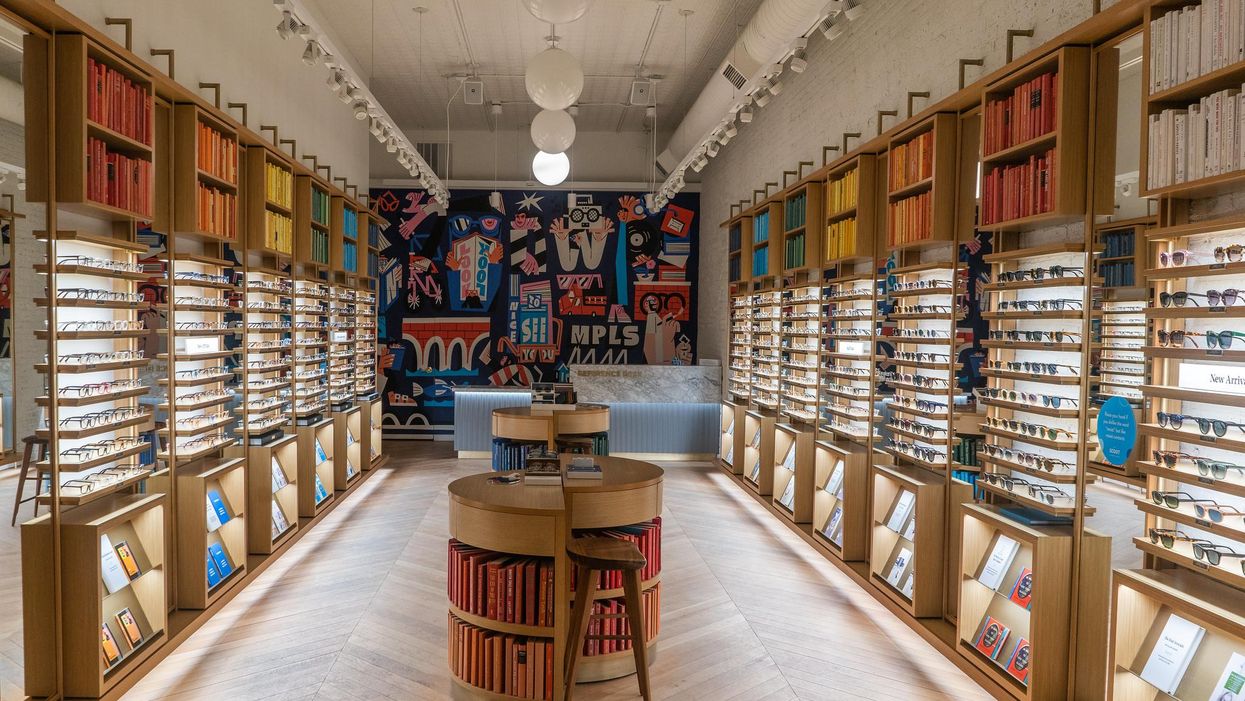Where a business starts isn’t always where it ends up. Over the long term, what matters is that the expansion and changes along the way are guided by the vision that the company has for impact in the world.
The evolution of eyeglass company Warby Parker over a decade, as shared by company co-CEO David Gilboa during a keynote at ShopTalk in Las Vegas, offers a compelling look at how this can play out.
Founded in 2010, Warby Parker started as a pioneer of the direct-to-consumer (DTC) model, providing glasses via ecommerce at what Gilboa said was a lower pricepoint than eye doctors' offices or existing retail outlets. As it grew to reach a wider audience, the company added new channels for distribution and improved the experience for consumers. Some of the approaches, such as in-person retail and billboard ads, are familiar to any traditional retailer. Yet by applying a focus on listening to customers and a willingness to develop technology that served it well from the start, Warby Parker forged its own path.
The company's journey could point to where commerce is heading. Over a decade, incumbent brands and retailers watched the rise of DTC brands like Warby Parker and took lessons to build ecommerce operations. Yet as ecommerce exploded and DTC brands grew up, it was also clear that the insurgents could apply the tried-and-true tactics of incumbent retailers to scale, albeit with their own digitally native spin. The exchange only seems poised to continue over the next decade.
With an eye toward where it might play out, here's a look at key ways Warby Parker expanded. It’s a look at how a DTC brand grew by blending the strategies of the physical and digital eras.
In-person stores

In a Warby Parker store. (Photo by Phil Roeder | Flickr)
Ecommerce was key to Warby Parker’s initial model, ushering in buzzy growth over the first half of the 2010s. Along with trendsetting, dark-colored frame design that stood out, it offered a pricepoint that was below others in the optical industry and allowed glasses to be shipped directly to a customer. Further, the company's model included home try-on, in which a shopper could receive up to five pairs of glasses, choose the one they liked, then return the rest.
But over time, the model evolved to include opening retail stores. Now, it has over 200 in-person locations in the US and Canada, Gilboa said, and is planning to open 40 more this year.
The shift helped the company attract new customers, but its approach was not merely about offering a showroom. It also added an important element of the experience of purchasing glasses: An eye exam. It employed eye doctors onsite so that shoppers can update their prescriptions. With this presence, it also added new offerings, including contact lenses and progressive lenses.
That made it not only glasses company, but a more holistic company building around vision.
“Seventy percent of all glasses are purchased at the same time, at the same place that someone gets their eye exam,” Gilboa said. “For us, almost all of our customers historically have gone to a non-Warby Parker doctor, and have had to have the awkward conversation about why they’re not buying glasses from them, get their prescription, come to our site or one of our stores, buy glasses from us, and then go somewhere else to buy contact lenses. Now we’re focused on bringing all of those aspects together and making it as easy as possible to take care of our customers’ eyecare needs.”
The in-store model took a hit for many with the pandemic, and Gilboa said that was evident in cities like its Grand Central location in New York. But other stores in suburban areas saw increased traffic over the last two years.
“We are expecting by the end of this year that, on average, all of our stores across our fleet will be back to pre-pandemic levels,” Gilboa said.
Beyond the frames
With each new launch, Warby Parker added offerings that expanded the business' customer base while staying consistent with its product approach.
Progressive lenses allowed it to provide glasses for more customers who are 45 or older. This is the demographic in which people develop presbyopia, which is a loss of ability to focus that comes with age. Now, this age cohort is the fastest growing portion of the company’s business, Gilboa said.
When it comes to contact lenses, the company developed its own brand that drew on two early markers of success: the pricepoint, and design. In this case, design played out in the packaging. The end result reduced the amount of material used and proved more hygienic than other contact lens packages.
Mass appeal

Warby Parker co-CEO Dave Gilboa speaks at ShopTalk. (Staff photo)
Customer satisfaction remains a primary marketing channel for the company, Gilboa said.
In the DTC space, the company's rise also coincided with a focus on the performance marketing tools provided by social media platforms and other internet providers to reach potential customers. While this has helped to propel businesses operating outside of typical retail channels, being over-reliant on one channel can lead to vulnerability when there’s a change. That has played out across the DTC landscape in the wake of privacy-oriented changes made by Apple with the release of iOS 14 in 2021.
The social-heavy strategy also has limits. Warby Parker has sought to reach a broad-based audience, and found that less targeted approaches worked.
“There are a lot of brands that we’ve seen that have fallen into the trap of relying on internet platforms that make it really efficient to reach individual customers, but those platforms, over time, charge higher and higher rents to reach those audiences, and every incremental customer costs more to reach,” Gilboa said. “We’ve found much more success in broad-based campaigns including traditional TV advertising where we can leverage fixed costs of creative, get benefit from media buys as we scale and [spread] that over larger audiences."
Owning the supply chain
Brands must also optimize the process for making a product, but there can be vulnerabilities there, as well. The supply chain issues that arrived early in the pandemic and inflation that followed this year painted a glaring picture of how brands can face pressure to raise prices due to forces that are seemingly beyond their control.
As Warby Parker grew, it made investments in its supply chain. The biggest cost is making lenses, so it opened an optical lab in Las Vegas to produce those itself. Likewise, the majority of its glasses are made in-house. This allowed the company to have more control over its costs in the face of the cascading challenges of the last two years, Gilboa said.
New technology

Warby Parker's virtual try-on. (Image via Warby Parker)
While some of Warby Parker’s expansion moves may have signalled a move beyond its digital roots, ecommerce has remained a key to the business. As the digital business grew, the company developed new technology tools to power the experience for shoppers.
As they weighed what kind of application to build, company leaders went back to what customers wanted.
“It always starts by looking at our customers and listening to our customers and ensuring that we’re solving problems for them,” Gilboa said. “What we heard from our customers over the years is that the two biggest issues they were trying to solve were how to find a pair of glasses that fits their face and looks good, and two, help updating their prescriptions.”
This led to a pair of applications designed to solve these problems:
- Virtual try-on, which uses augmented reality and Apple’s true-definition camera to show a true-to-scale representation of what a pair of Warby Parker glasses looks like on a customer’s face.
- Virtual vision test, which allows an eye doctor to renew a prescription by administering a vision test via app. The tool can detect when a user is standing 10 feet away from a phone, and provides the results within five minutes.
'A bigger stage'

Warby Parker went public on the NYSE in 2021. (Photo via Warby Parker)
In 2021, Warby Parker took a big step to becoming a large-scale business player as it became a publicly traded company on the New York Stock Exchange. It once again took its own path, with a direct listing approach that is increasingly being adopted by a new generation of digitally born businesses.
Going forward, this means it has wider visibility and different ways to access capital. It also means that its stock price and performance metrics are made public and under daily scrutiny. This has been evident as the stock price has slid in recent months, leading to wider questions about profitability for DTC-born businesses that went public. Asked about this, Gilboa said the company is looking to prove less that the DTC model can work, and more that, “You can build a great for-profit business that does good in the world without charging a premium for it.”
“That does mean that you need to build a durable business that can grow quickly that can be profitable,” he said. “By taking a step to become a public benefit corporation and going public, we recognize that we’re operating on a bigger stage and hopefully we can inspire a lot of other companies to think along the same lines."
Related Articles Around the Web
















